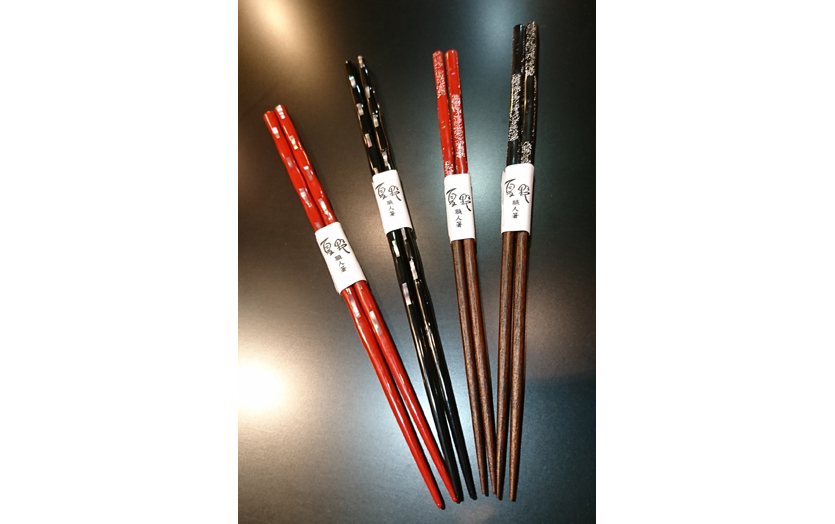
A pair of hashi(chopsticks) is something you casually use every day.
As lacquer ware you are most familiar with, they are something you cannot go without when eating in Japan. They are widely used in countries in East Asia, and although using a pair of sticks is universal, each country has their own different lengths and shapes depending on the food culture. When were they introduced to Japan, and how did they change? As we show you their history, let us introduce you to the attraction of hashi, a daily necessity and also a small work of art.
What is hashi?
Hashi (chopsticks) are the same as hashi (bridge), in that both connect two sides, so the hashi utensil connects food with the person eating.
It is said that the word “hashi” was originally a combination of the classical Japanese words “ha (both sides)” and “shi (bind, fix).” So hashi often become wedding gifts as an “intermediary” between husband and wife.
The pair of sticks has 12 functions — “pinch, hold, hold down, scoop, rip, put on, peel, loosen, wrap, cut, carry, and mix,” so hashi are not just tools, but are thought to serve as part of the human organ. Further, in Japan, hashi are special daily items that are usually not shared even among a married couple or parents and children, each having a pair of their own. (members of families also have their own soup bowls, rice bowls, tea cups, etc.).
Origin of hashi
It is said that the origin of hashi goes back to around 300 B.C., when people in China started to use fire when cooking, and they were used as tools to cook and to eat hot food.
History of hashi in Japan
During the Asuka period (592-710), hashi was introduced to Japan as a “sacred treasure” from China and the Korean Peninsula. Originally, they were folding bamboo chopsticks (like tweezers), and they gradually changed to two lacquered sticks. At first, they were used when placing offerings to god, and it was said that hashi were only used by god and the emperor.
As Japan entered the Nara period (710-784), hashi began to be used by aristocrats as well. Most of them were made of bamboo, but some were wooden without coating. Although details of everyday necessities are not on record, it is said that commoners started to use hashi during the Kamakura period (1185-1333).
During mid-Edo period (1603-1868), as a local industry, each clan competed with each other by making lacquer ware, resulting in the development of lacquered hashi. Places of lacquer ware production known today were mostly established at this period, and at the same time, lacquered hashi became diversified. At the end of Edo period, rich townspeople and merchants used lacquered hashi to show off social status, so the commoners had not yet started using them. Incidentally, hashi were recycled as those used by eel restaurants were shaved and used by soba restaurants, and hashi used by soba restaurants were then painted and used by cheap eateries.
From the Meiji period (1868-1912) to Showa 20’s (1945-1954), hashi used by commoners were mainly bamboo hashi or unpainted wooden hashi.
During the Showa 30’s (1955-1964), the period of rapid economic growth, many chemical coated hashi were produced in traditional production areas of lacquered hashi, which were extremely cheaper than lacquered hashi, as drying machines were used to dry the coating. In this way, the cheaper hashi expanded their share in the market.
What are the differences among hashi used in China, South Korea, and Japan?
Hashi are used not only in Japan, but in China and Korea as well. How different are they compared to hashi used in Japan?
China
They use hashi that are longer, and both ends of the sticks are about the same thickness. The Chinese use the china spoon along with the hashi.
South Korea
Koreans use hashi that are silver (metal), and they are somewhat flat shaped. It is said that the reason they are made from metal is because they had many wars going on, and durability was needed when carrying them around, and the silver used in the hashi also served as a poison taster (the color changed reacting to poison), among other reasons. Further, they are flat to make the weight of the metal lighter. They use hashi along with a spoon (sutgarak).
Japan
They are characteristic for their narrow tips. They had developed into this shape to use when eating delicate food. Basically, Japanese food is eaten using only hashi. However, there are dishes that cannot be eaten by only hashi such as miso soup, so in Japan, hashi and soup bowls are a set. In the olden days, when people went on a journey, it is said that they brought both hashi and a bowl. When counting things, the Japanese language has various ways depending on what you count. A pair of hashi would be “zen.” So a pair of hashi (for one person) is “one zen.”
Further, there is the “iwai bashi (hashi used for celebrations),” which have narrow tips on both sides of the sticks, and are used during New Years’ to eat osechi ryori (New Year dishes). The reason both ends of the hashi are narrow is because one side is for the person to use, and the other side is for god to eat the osechi ryori. When using a regular hashi, some people use the tip that is not narrow to dish out food from large plates, but in the case of iwai bashi, you cannot do that, since the other tip is reserved for god.
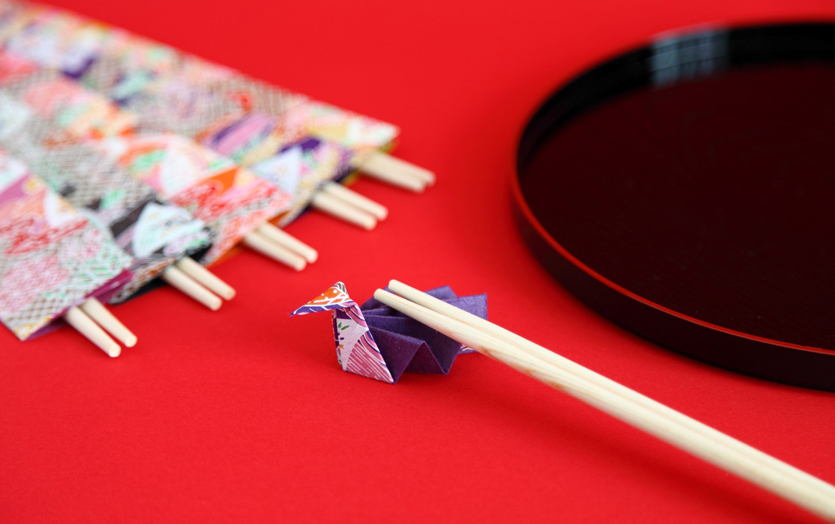
How to use hashi
Today, it is said that the number of Japanese that can use hashi properly is about 30%. This means that many people cannot use hashi correctly, but even so, when you see someone not being able to use them properly when eating, they give you a strange feeling. Being able to use hashi correctly allows the person to use them and eat food more easily. Once you fall into a habit of using hashi in an odd way, it is difficult to correct it. We hope you will practice using them step by step every day, and enjoy eating various Japanese food such as sashimi, sushi, tempura, and ramen.
Try practicing using hashi in the following order.
1: first, choose the right size for yourself.
In order to use them everyday in the proper way, it is important to choose a pair that is easy to use. As in the photo, spread your hand with the thumb and index finger in a right angle. The length between the two finger tips is called “hito (one) ata” and the right hashi length for you is 1.5 times this length, which is called “hitoata han.”
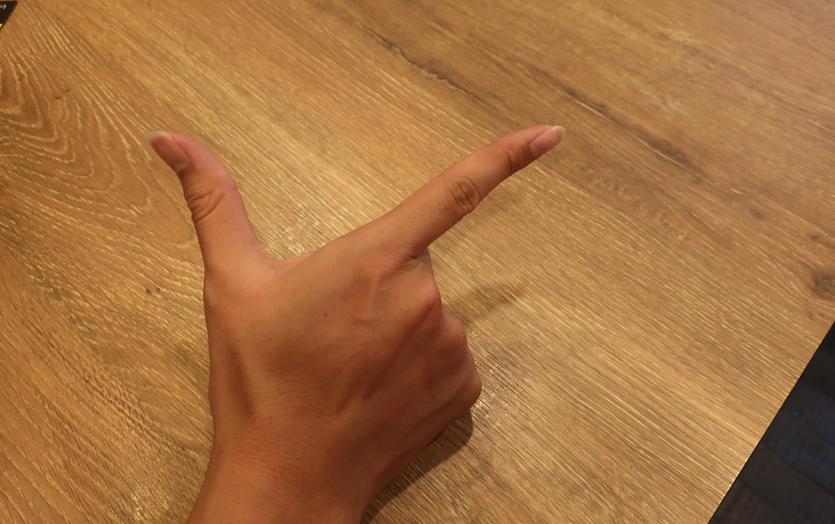
2: Hold just one hashi and move it around.
1/3 away from the tip of the thick end is where to place your thumb and index finger and trap the hashi firmly in place. Place your middle finger on the hashi and hold using three fingers. This is also the way to hold a pencil in Japan. Lightly hold on, not too tightly. After you hold the hashi, try writing the number “1” by moving it vertically. Use just your fingers, and not your wrist, and write a large “1” In the air.
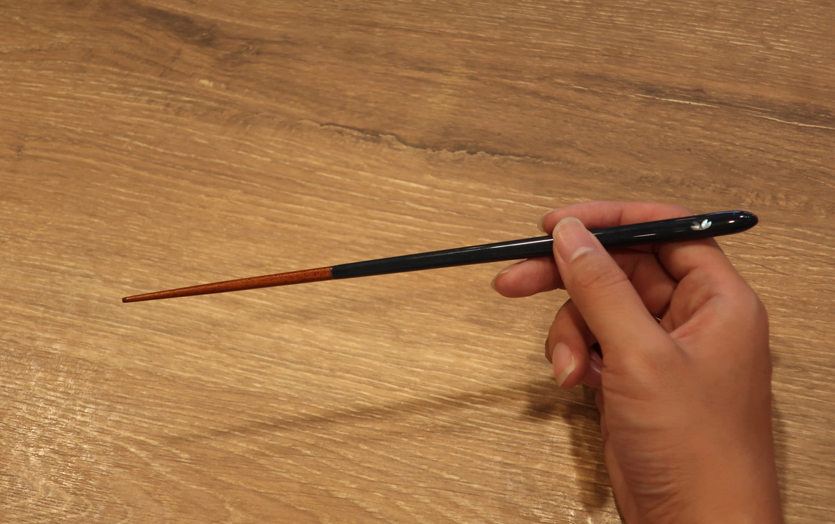
3: Try holding the other hashi as well.
If you get used to it, insert the hashi between the base of your thumb and the first knuckle joint of your third finger while you hold the upper hashi.
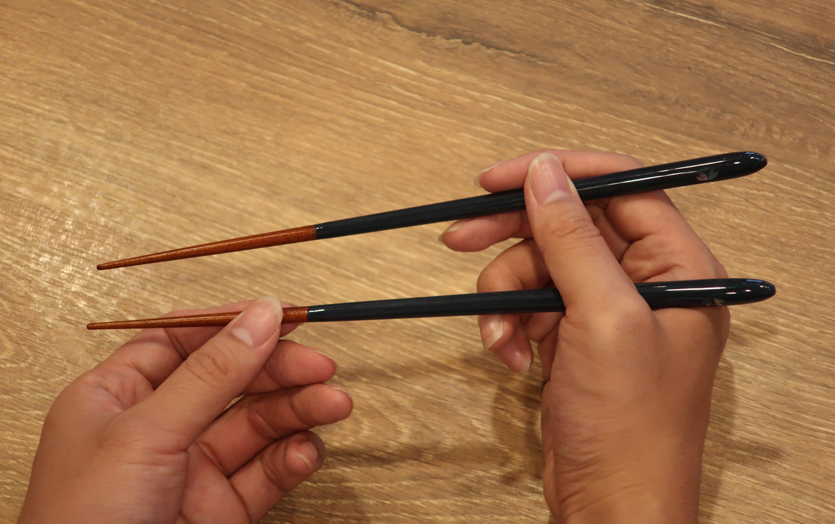
4: Try moving just the upper hashi.
Hold the lower hashi with your left hand so it won’t move and write a large “1” in the air again by moving just the upper hashi.
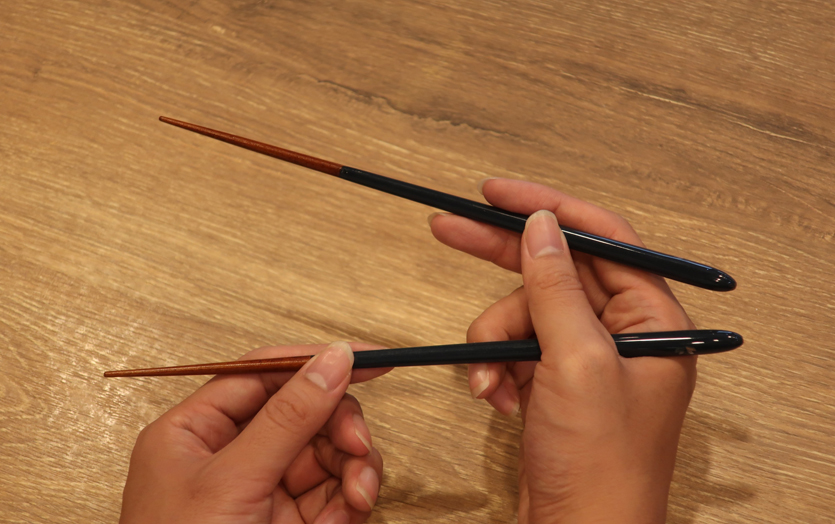
5: When you get used to it, take your left hand off the hashi and practice.
The point here is to be able to make a triangle with the tips of both hashi, since the two hashi should be positioned wide apart.
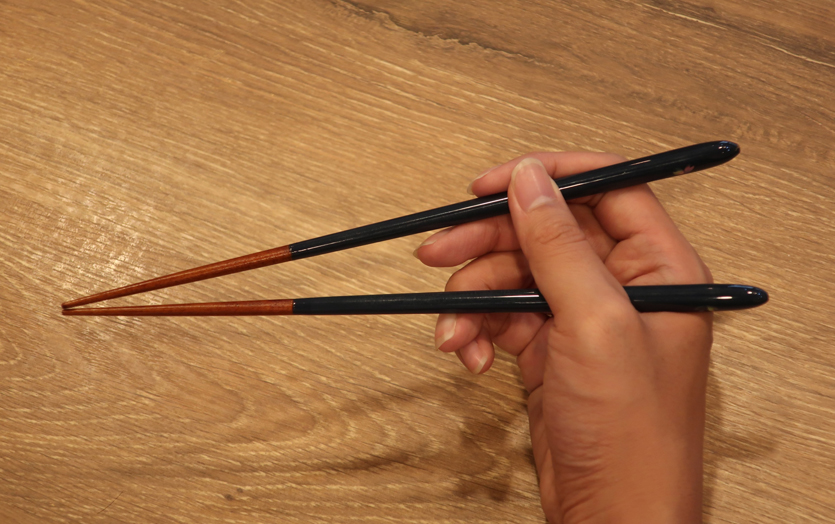
6. If you can move the tips making a taping sound, you are all set.
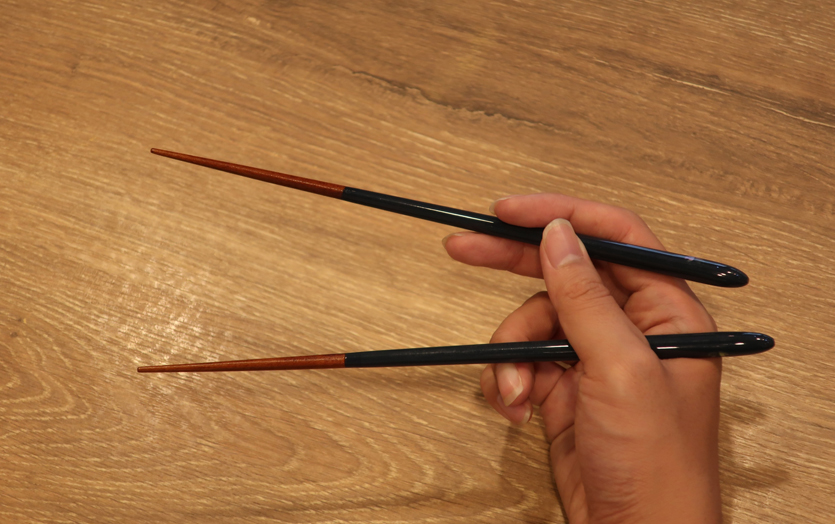
Don’t think too hard. Even if you can’t get it right during your meal, you can practice before eating bit by bit every day, and eventually, you will be able to use hashi beautifully. Along with the correct way, there is also bad manners when using hashi called “kirai bashi.”
For examples…
Sashi-bashi: Spearing food with hashi.
Neburi-bashi: Licking the food on the ends of hashi.
Mayoi-bashi: Waving the hashi around over the food, trying to decide what to take.
Yose-bashi: Pulling the dishes that are far towards you using the hashi.
Watashi-bashi: Putting hashi on tableware. (This means “I am finished eating.”)
Hashi-watashi: Giving and taking food directly from another person as both use hashi. (This reminds people of “hone age” *1 of the deceased at a funeral)
Futari-bashi: When two or more people try to take food from a dish at the same time.
Ogami-bashi: At the start of the meal, joining hands as if praying and placing hashi between both thumbs and index fingers and saying “Let’s eat!”